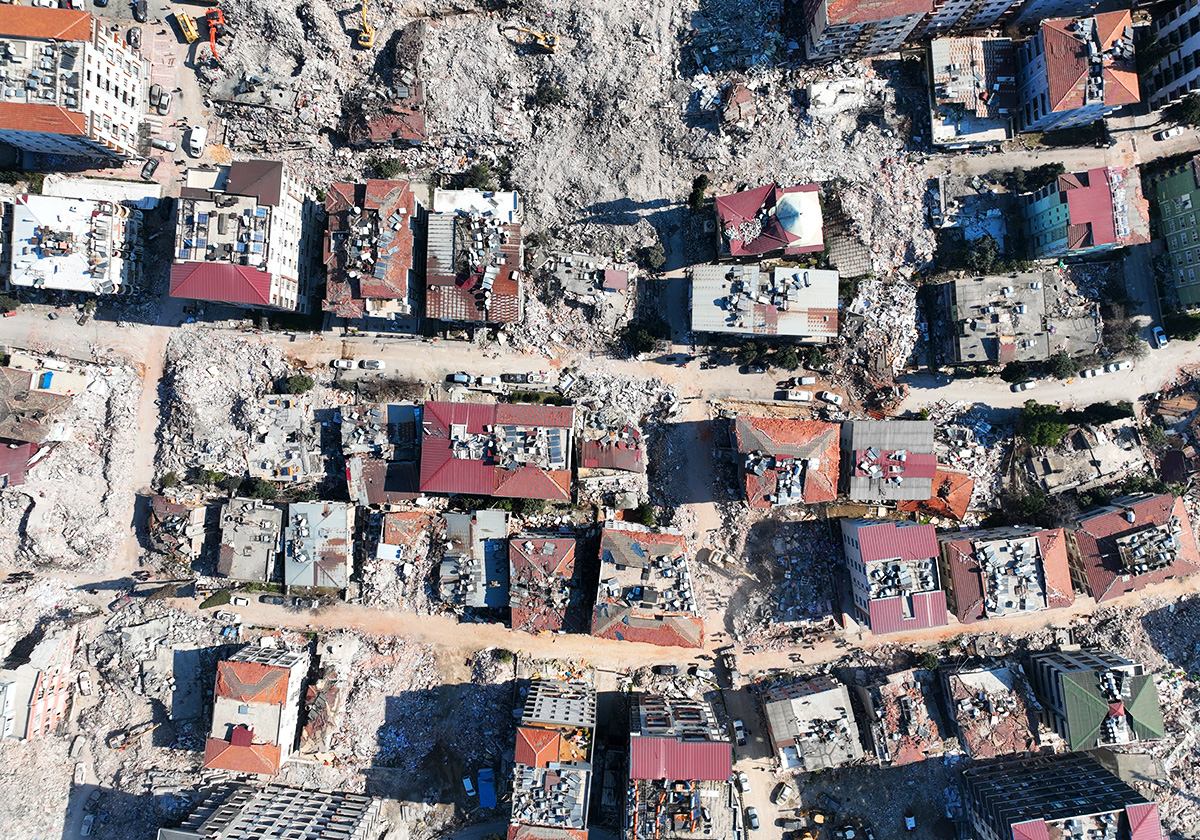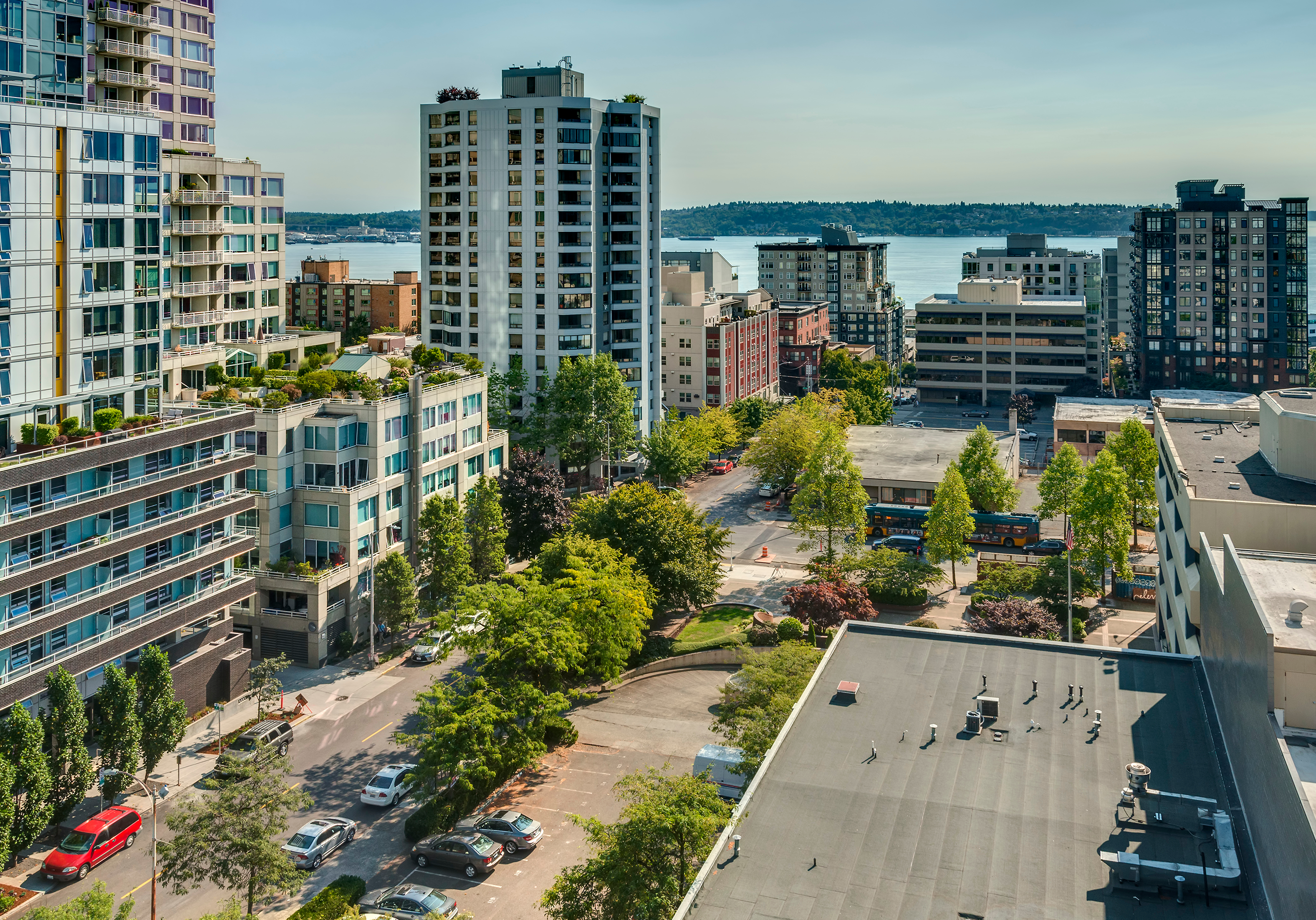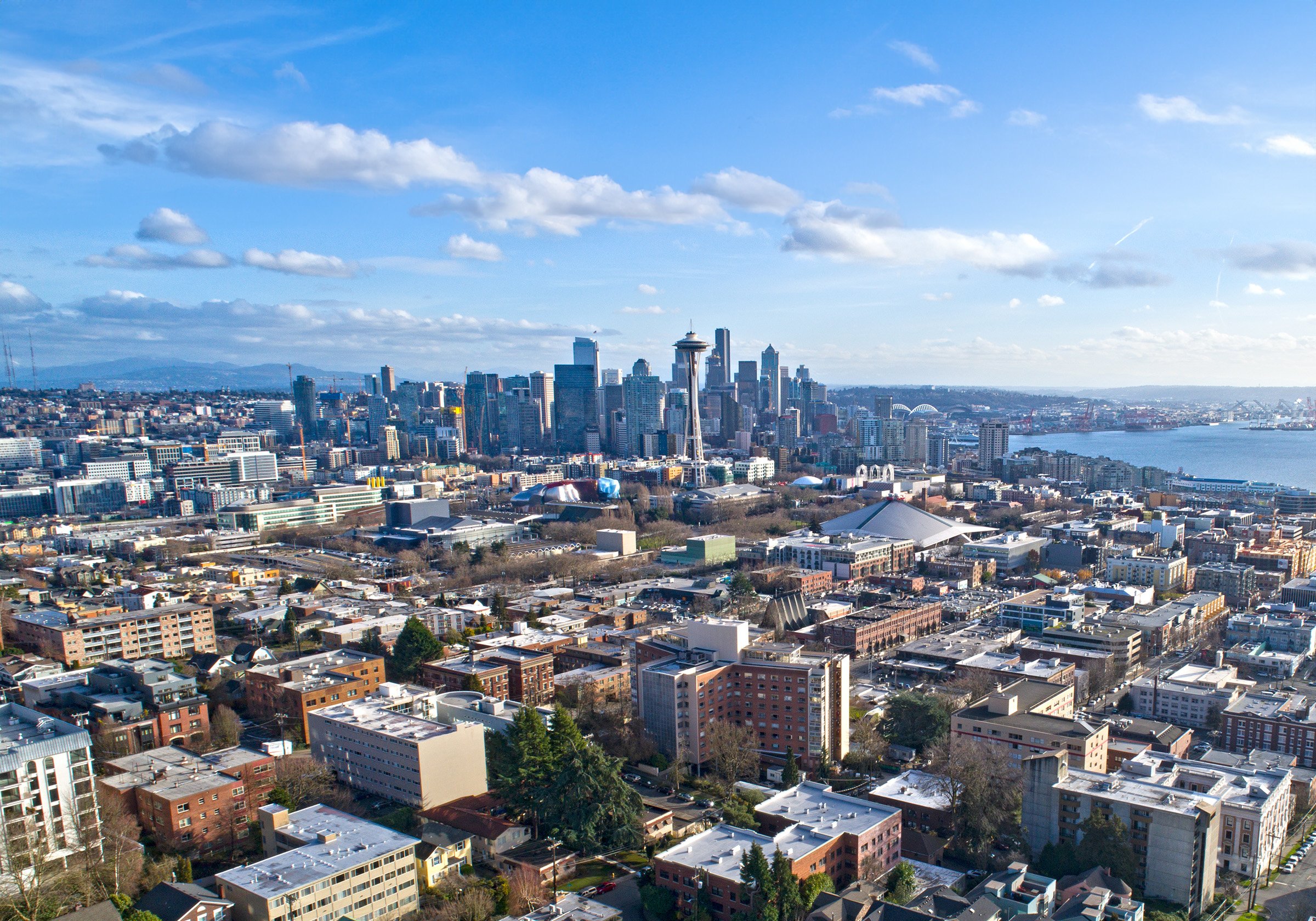The recent earthquakes in Turkey and Syria remind us of the importance of earthquake preparedness and effective building codes. Ensuring that our buildings are designed to withstand seismic activity keeps communities safe and reduces the potential for loss of life.
Much and more can be said regarding how the region's geopolitics contributed to the devastation experienced in early 2023. However, for this article, we will focus primarily on Turkey and how the lackadaisical enforcement of crucial building codes exacerbated the crisis in the region.
Before continuing, be sure to stay informed with similar content by signing up for notifications.
February
It was early morning when the ground began to shake.
The initial 7.8 magnitude quake struck deep within the earth at 4:17 am on February 6, 2023, sending violent shockwaves across the border region between Turkey and Syria.1 Even for such an earthquake-prone area - the confluence of the Anatolian and Arabian tectonic plates - this event was among the strongest ever recorded in the region; it’s since been designated the region’s strongest earthquake to occur since the 1939 Erzincan quake.
Related:
Do You Know Your Earthquake Classifications for Buildings?
The ensuing weeks saw over 10,000 aftershocks, causing destruction over an area roughly the size of Germany. Buildings across the region collapsed, and 1.5 million people were left homeless. The quakes affected an estimated 14 million people, resulting in nearly 60,000 reported deaths and over US$100 billion in assessed damage. These numbers are mind-boggling, and they may not tell the entire story.
How and why did such astonishing levels of devastation occur? The answer has to do with a lot more than just plate tectonics.
Turning a blind eye
“This is a disaster caused by shoddy construction, not by an earthquake.”2
In 2018, 120 experts coordinated to revise Turkey’s building code, particularly emphasizing earthquake resilience.3 The revised earthquake code was a comprehensive update to the code produced in 2007. On paper, the updated codes were a big advancement aimed at mitigating the impact of earthquakes, saving lives and crucial infrastructure. The reality, however, was much different.
Construction is expensive; it takes effort, time, and lots of money. Developers who want to maximize their profits must minimize those three factors as much as possible, constructing buildings that are easy to erect, go up quickly, and cost as little as possible.
This kind of thinking isn’t new. We can see echoes of this mindset in the cheap midcentury construction projects of Great Britain and across the Soviet Union. Shoddy construction is a problem on its own, even on the most stable ground in the world.
In the wake of the February quakes, it has become increasingly apparent that the revised Building Code of Turkey was scarcely followed or enforced on new buildings, and there has been very little retrofitting of earthquake standards on existing buildings. How could this happen? Two words: construction amnesties.4
Since the 1960s, Turkey has permitted periodic legal exemptions to developers and property owners, allowing them to bypass safety certification by paying a fee. At least 75,000 buildings in the affected earthquake zone were found to have received construction amnesties. Across Turkey, that number is much higher, with some estimates placing the total number of non-compliant structures in the tens of millions.
Ultimately, it’s hard to know what the outcome of the 2023 earthquakes would have been had more structures throughout southern Turkey been up to code. That said, building codes exist for a reason.
Why building codes matter
Let’s briefly shift our attention toward Japan, another earthquake-prone country.
Japan has suffered over a dozen significant earthquakes in the past decade alone. In 2011, the Tohoku earthquake, registered at 9.1 magnitude, killed nearly 20,000 people and was responsible for extensive material damage; it is currently listed as one of the top five largest recorded earthquakes worldwide.5
If there is anyone who understands the threat of earthquakes, it’s the Japanese.
Related:
BCEGS: Because Rules are There for a Reason
Earthquakes have long been an essential aspect of the Japanese building code. The Seismological Society of Japan, founded in 1880 following an earthquake in Yokohama, first began exploring the science of detection.6 As the 20th century progressed, strides were made in seismology, with particular emphasis on earthquake analysis and improved methods of building construction.
Following WWII, the Japanese government applied strict measures to guarantee the construction of earthquake-resistant buildings, particularly as cities were rebuilt and skyscrapers grew taller. The standards it developed fall into three primary categories:7
Taishin: The minimum requirement, mandating specific thicknesses for beams, pillars, and walls
Seishin: The median requirement, compelling high-rise buildings to utilize energy-absorbing dampers
Menshin: The highest requirement, involving total isolation of the building structure from the ground by incorporating layers of lead, steel, and rubber which move independently with the earth below
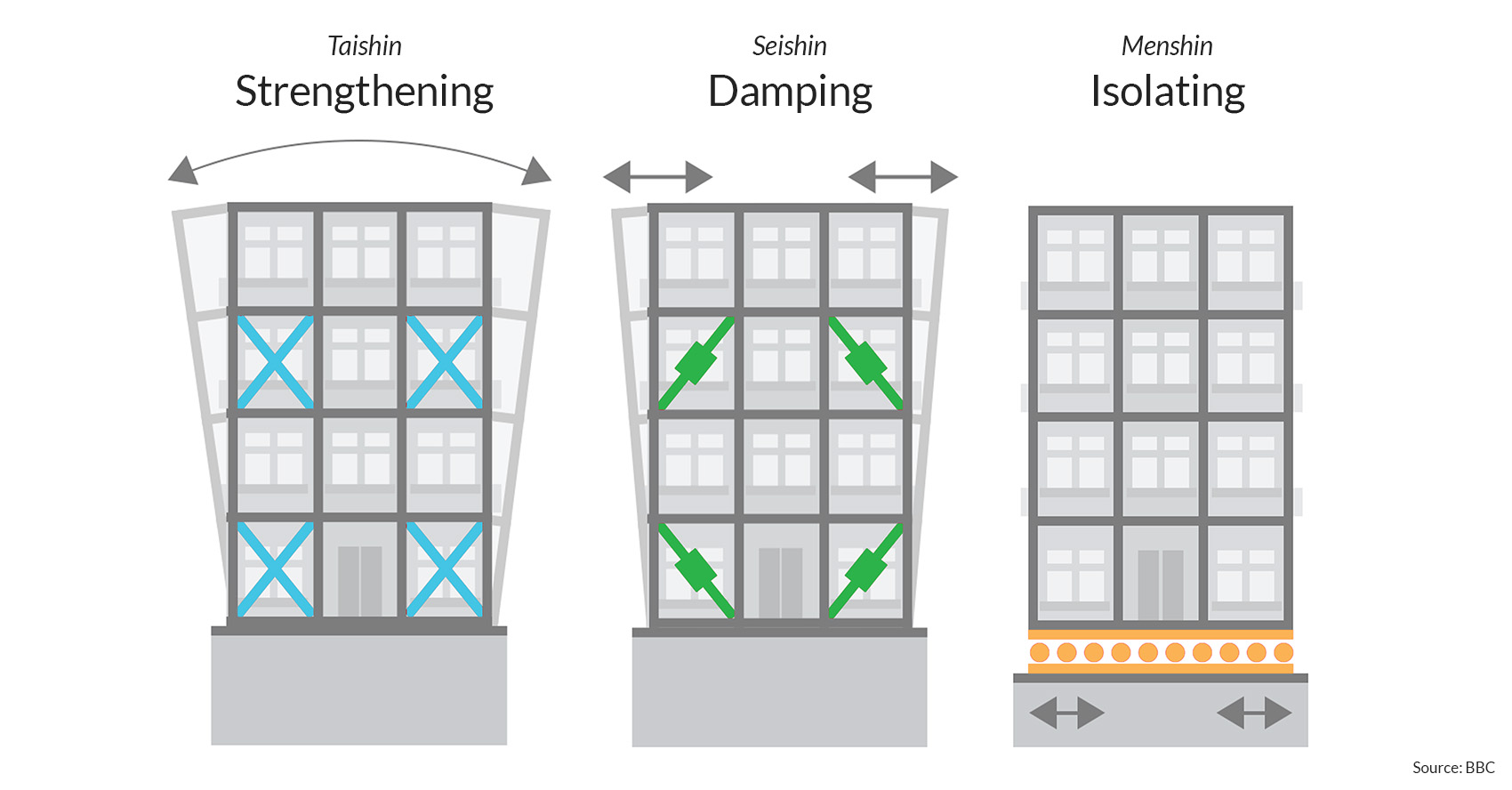
So far, so good. But Turkey has similar building standards, as outlined in their revised 2018 Building Code of Turkey. How, then, is Japan so successful at thwarting seismic-driven devastation? Three reasons: innovation, investment, and regulation.
Innovation and investment are essential pillars, providing updated processes and necessary funding for massive construction and building improvement projects. It would all be for naught, however, without regulation.
Why regulation matters
Lack of regulation exacerbated the fallout from the 2023 earthquakes in Turkey, causing more people to lose their homes and their lives.
In contrast, the Japanese methods of earthquake code regulation have mitigated the potential costs. In the last decade, throughout 13 different earthquake events, only 100 deaths have been reported.8 The Japanese code, and the enforcement therein, have provided a workable example for other countries around the world, including the United States.
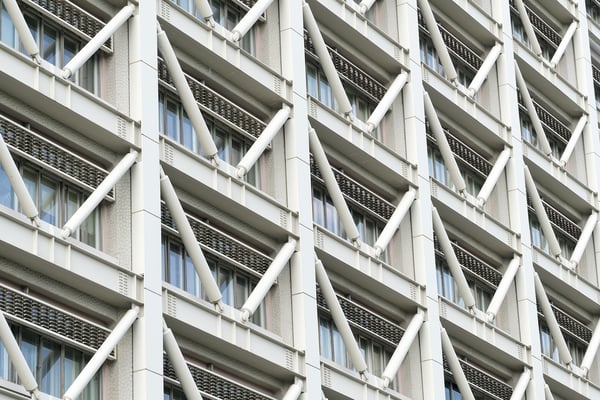 An example of earthquake-resistant construction in Tokyo.
An example of earthquake-resistant construction in Tokyo.
In Seattle, building codes were revised in 2019 to account for stronger earthquakes.9 The new code requires newly constructed buildings to be engineered for earthquake forces 20-25% stronger than the previous code edition. The Department of Construction & Inspections ensures that no non-compliant buildings are constructed.10 Additionally, given that there are roughly 1,200 unreinforced masonry structures, steps are being taken to retrofit and bring these buildings up to code.11 Thanks to proper regulation, code compliance isn’t something building owners can opt out of.
Looking toward the future
Ultimately, we cannot control when and where earthquakes strike; they are entirely out of our control. However, what is within our control is how we prepare beforehand, the steps we take to mitigate loss and protect people and property. Innovation, scientific inquiry, and the development of improved processes will steadily make us better. Ensuring we consistently do what we can in the present helps us build stronger foundations for the future, even if we live on shaky ground.
[1] Wikipedia, https://en.wikipedia.org/wiki/2023_Turkey%E2%80%93Syria_earthquake
[2] AP News, https://apnews.com/article/politics-2023-turkey-syria-earthquake-government-istanbul-fbd6af578a6056569879b5ef6c55d322
[3] Prevention Web, https://www.preventionweb.net/news/turkey-new-building-code-earthquake-resilience
[4] BBC, https://www.bbc.com/news/64568826
[5] Wikipedia, https://en.wikipedia.org/wiki/2011_T%C5%8Dhoku_earthquake_and_tsunami
[6] Wikipedia, https://en.wikipedia.org/wiki/Seismological_Society_of_Japan
[7] Plan Radar, https://www.planradar.com/gb/japan-earthquake-proof-buildings/
[8] Wikipedia, https://en.wikipedia.org/wiki/List_of_earthquakes_in_Japan
[9] GlobalSpec, https://insights.globalspec.com/article/10873/seattle-revises-building-code-to-account-for-stronger-quakes
[10] Seattle, https://www.seattle.gov/sdci/about-us/who-we-are
[11] Seattle, https://www.seattle.gov/emergency-management/hazards/unreinforced-masonry-buildings-(urm)-




